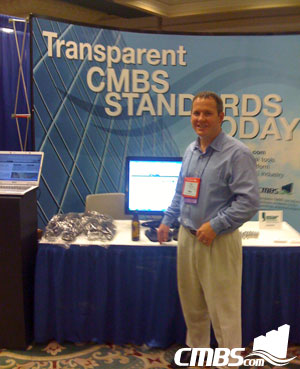More XML discussion with no movement
Monday’s IRP Committee Meeting at the annual CMSA conference was more talk and no action. There were about 100 people in the room including many investors and servicers, which highlighted the importance of the topic. The committee heads gave a good summary of the IRP process and why it is no longer being pursued. Then they opened the meeting to questions.
The first question was “Are we transparent enough? If not, what are we missing?” The answer came from an investor: “No, we are not. We need rent rolls.” I literally applauded. And the debate began.
Those who are trying to kill any transparency improvements gave the typical responses:
1) Budgets are too tight right now for additional technology spending.
2) The PSA’s have this concept of “restricted data.” The servicers will bear liability if they share too much data.
3) Borrower’s don’t want rent rolls to be shared.
The responses from the folks who support better transparency where just as passionate:
1) When the market was working, the argument was we were all too busy to make the investment in XML. Now, we are not busy enough to make it? Plus, the actual cost to produce an XML report on existing data cannot be very high.
2) While some PSA’s do have the concept of restricted data, the vast majority of them state the reporting standards are dictated by the IRP, not the PSA. Sure, conservative lawyers may take a position to support their client’s goal of not sharing data, but most lawyers I spoke to agreed that “reporting could probably be significantly expanded without incurring liability.”
3) Borrowers generally are contractually obligated to supply the rent rolls. They have no ability to restrict their distribution. While some may not like this, my guess is they will all accept this openness if it helps open up the markets.
Compromise?
One of the major services floated an idea about keeping IRP 5 in place but amending the property file with XML-based rent rolls and operating statements. While I think we should move the entire thing to XML, I welcomed the comment because it at least represents movement. Then, quickly, another major servicer said “no” to even that step.
Stalemate
So, like the rest of the meetings on this topic, it simply ended with no resolution and no direction to go forward. Frustrating to say the least. I then pushed CMSA leadership to provide direction and rules on how to break the stalemate. How does a committee sponsored by a trade group get anything done if it needs unanimous consent? What are the rules? Are we like the U.N. Security Council where all members hold veto power?
Pat Sargent, the new president of the CMSA, reportedly stated at the Wednesday Board of Governors meeting that the CMSA would tackle the XML/Transparency issue “head on” and would push for resolution — one way or the other.
Hopefully Pat will provide the leadership to move this issue.
Conference Mood
The mood of the conference was a bit better than I was expecting. While there were still plenty of shellshocked people, the general mood was more of acceptance than denial. The Special Servicers are jammed and busy as can be. The investors were “playing nice” with the B Piece guys. Even some lenders where thinking about next steps. But, the main sentiment was acceptance that the next 18–36 months will include a massive deleveraging process with foreclosures, price declines and continued lack of liquidity.
And, if some have their way, no new data to help sort out the mess.
— — —
Jim Flaherty is CEO of CMBS.com and the creator of the Backshop loan origination system. He is a trained credit professional with experience installing enterprise underwriting systems for commercial real estate lenders, rating agencies and investors.






